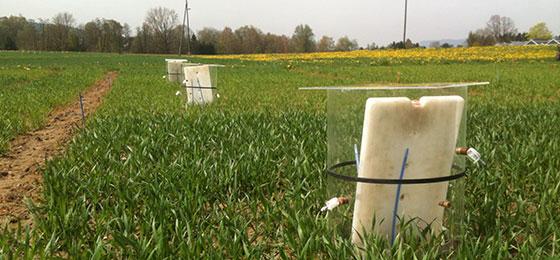“Carbon input” project completed

Carbon input via roots and rhizodeposition in the soil is the most important source of carbon for building soil organic matter on agricultural land.
Through the process of carbon sequestration, soil organic matter (SOM) acts as the world’s largest carbon store and therefore plays a key role in regulating global climate. Maintaining or increasing SOM via the carbon inputs via arable crops is a central objective of soil protection strategies in agriculture.
The project shows the impact agriculture has on carbon input through arable crops: the intensity of farming influences the carbon that is stored in the above-ground parts of plants significantly more than it influences subterranean carbon. Contrary to previous assumptions, the intensity and type of farming have only a minimal influence on subterranean carbon input.
Thanks to the project, soil carbon models and carbon footprints can now be improved. For example, the findings have been incorporated into the “Basis for fertilising agricultural crops” (GRUD 2017) and have been used to validate the newly introduced web-based Agroscope humus balance (www.humusbilanz.ch).
- Project Carbon input
- Executive Stakeholder Summary (in German) (PDF)
- Executive Stakeholder Summary (in French) (PDF)
